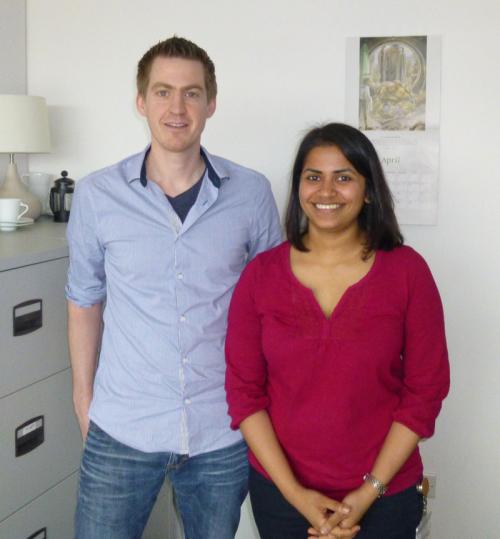
Dennis Castor and Nidhi Nair in Rouse Lab 'un-knot' a long-standing problem
Congratulations to Dennis Castor and Nidhi Nair who have published a paper which solves a long-standing problem regarding how cells deal with chromosome 'tangles' that link them in a way that is deleterious to cell function. Holliday junctions are 4-way DNA junctions that intertwine – tangle – chromosomes. They arise normally during DNA repair, and if they are not removed then cells die as they try to segregate their chromosomes in mitosis. It was known that Holliday junction removal requires special nucleases (enzymes that cut DNA) – or 'resolvases'. The resolvases in bacteria and phages that remove Holliday junctions are known; they act as homodimers, with each subunit of the homodimer introducing one of the two cuts in Holliday junctions necessary for their resolution. For over 30 years scientists have been searching for the resolvases in eukaryotes that remove Holliday junctions from our DNA in vivo. Dennis and Nidhi showed that HJ resolution in eukaryotes requires two separate nucleases - MUS81 and SLX1 - that act together as a HJ resolvase. The two nucleases act cooperatively – the first cut is probably introduced by SLX1 to create the preferred substrate for MUS81, which makes the second cut to finish resolution. Consistent with this idea, both SLX1 and MUS81 nucleases bind close together on the SLX4 scaffold, and this tethering is essential for HJ resolution in cells. So in eukaryotes the two incisions in Holliday junctions necessary to remove them are made by two separate nucleases tethered close together on a scaffold, instead of by the two subunits of a homodimer. We propose this arrangement in eukaryotes increases the ease of regulating resolvase activity. These findings provide the mechanism for HJ removal in eukaryotes, and they provide the first demonstration of the physiological roles of SLX1. Dennis and Nidhi made their findings with help from Simon Arthur, and from Anne Cecile Declais in David Lilley's lab. They are joint first authors on a paper describing these data that was published online recently in Molecular Cell.

